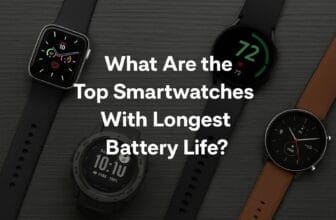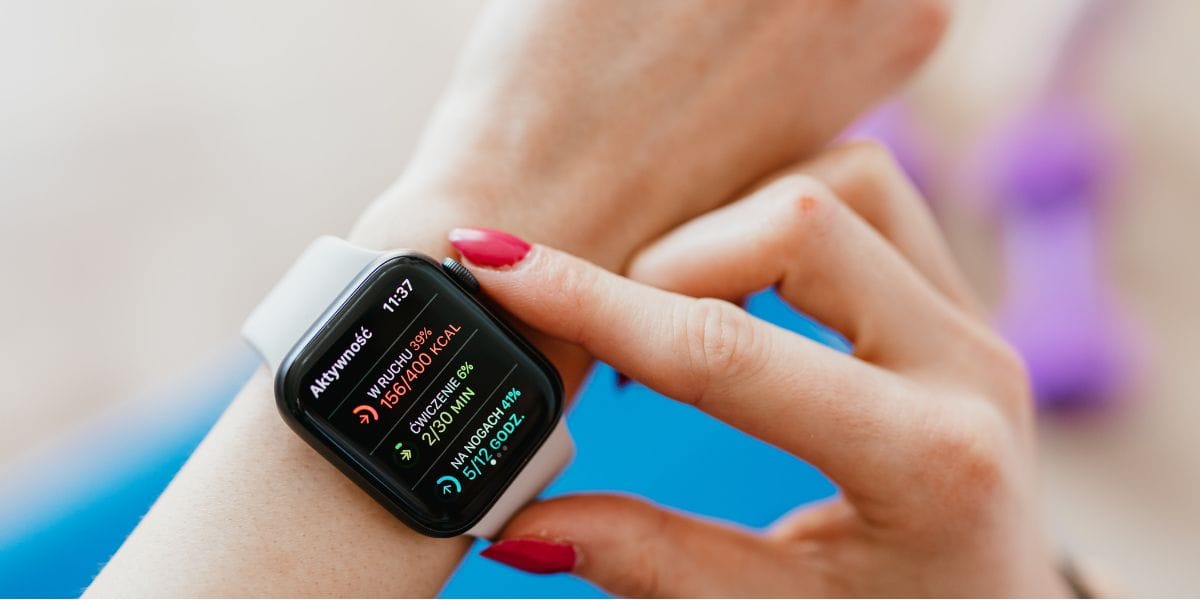
What Health Metrics Can My Smartwatch Track? Unlocking the Full Potential of Your Wearable
Curious what health metrics your smartwatch can track? Explore the full range—from heart rate and sleep to SpO2, stress, and beyond. Discover how your wearable can transform your health and wellness!
Your smartwatch is more than just a fashionable timepiece or a device for checking notifications on the go. In today’s world, it’s your personal health companion—silently gathering data and delivering insights about your body 24/7. But what health metrics can your smartwatch track? Can it really do more than just count steps? The answer is a resounding yes.
With advancements in wearable technology, smartwatches have evolved into powerful health monitoring tools that can help you understand, manage, and even improve your well-being. Whether you own a Samsung, Apple, Garmin, Fitbit, or another brand, the capabilities of your smartwatch may surprise you. In this guide, we’ll explore the full spectrum of health data your smartwatch can track, how accurate it really is, and why it matters for your daily life.
Table of Contents
The Evolution of Health Tracking on Smartwatches
Core Health Metrics Your Smartwatch Can Track
Heart Rate Monitoring
Sleep Tracking
Activity & Exercise Data
Stress Level Detection
Blood Oxygen Saturation (SpO2)
ECG and Heart Rhythm
Respiration Rate
Body Temperature
Menstrual Health Tracking
Fall Detection & Emergency Alerts
Specialized Features by Brand
Apple Watch
Samsung Galaxy Watch
Fitbit & Garmin
Smartwatch Apps for Android
Smart Watches for Seniors
How Accurate Are Smartwatches for Health Monitoring?
How Smartwatches Detect Health Issues
Best Smartwatches for Health Monitoring (2025)
Why Smartwatch Health Data Matters: Real-Life Examples
Maximizing Your Smartwatch: Tips and Best Practices
Final Thoughts: Take Charge of Your Well-Being
The Evolution of Health Tracking on Smartwatches
It wasn’t so long ago that wearable tech was limited to simple pedometers. Today, smartwatches have revolutionized health tracking with sophisticated sensors, AI-driven analytics, and real-time alerts. Modern devices can monitor your body’s signals while you sleep, work, exercise, and even during times of stress. With the right smartwatch, you have a health dashboard right on your wrist—empowering you to make better choices every day.
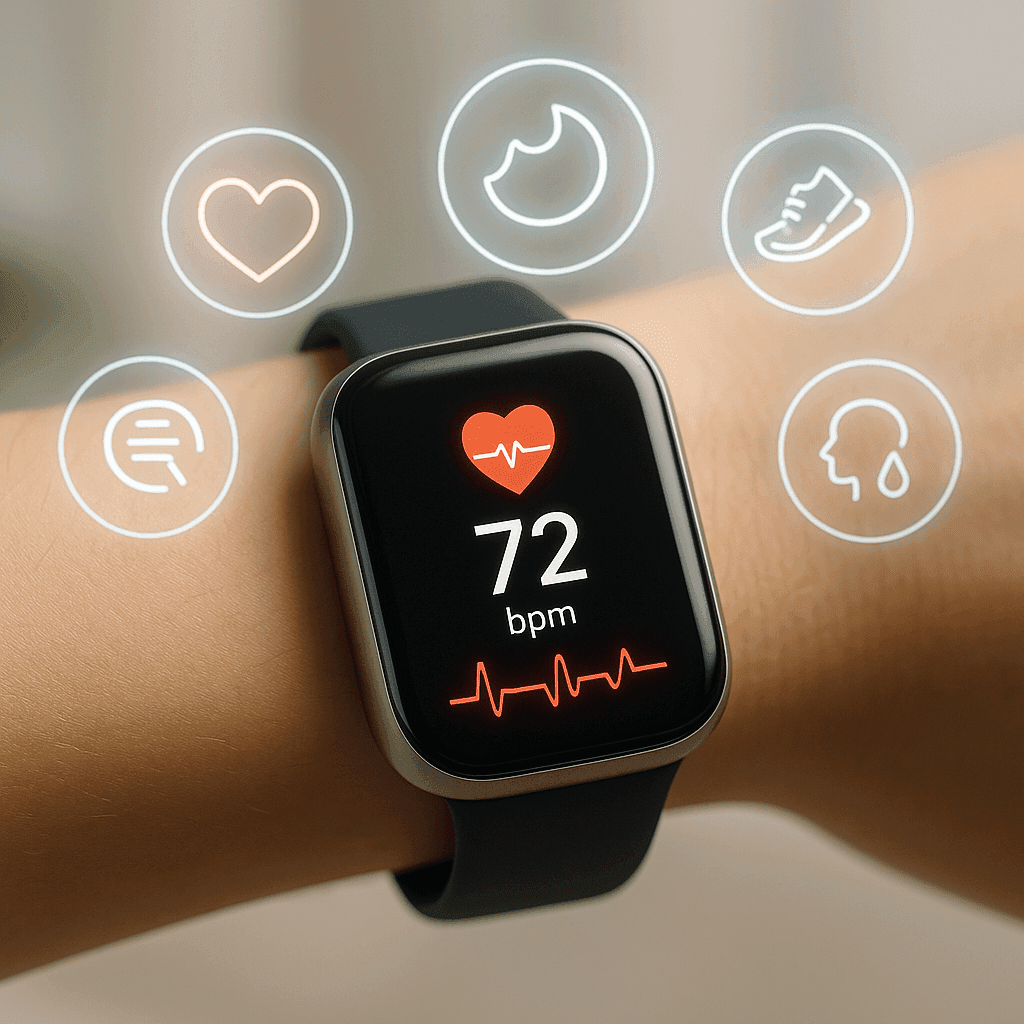
Core Health Metrics Your Smartwatch Can Track
Let’s break down the major health data points your smartwatch can monitor and what they mean for your wellness journey.
1. Heart Rate Monitoring
What it does:
Tracks your heartbeats per minute (BPM) using optical sensors that measure blood flow in your wrist.
Why it matters:
Detects abnormal heart rhythms (like arrhythmias).
Shows resting, active, and recovery heart rates.
Helps optimize workouts and cardio training.
Can detect spikes due to stress, illness, or overtraining.
Example:
During a run, your Samsung Galaxy Watch displays your real-time heart rate, warning you if you’re pushing too hard or not hard enough for your fitness goal.
2. Sleep Tracking
What it does:
Monitors your sleep stages—light, deep, and REM—plus total sleep duration, disruptions, and sometimes even breathing irregularities.

Why it matters:
Identifies patterns of poor sleep or insomnia.
Offers actionable tips for better rest.
Many devices (like Fitbit or Apple Watch) provide a sleep score each night.
Example:
Your Fitbit gives you a detailed breakdown of your 8-hour sleep, showing periods of wakefulness, deep sleep, and even how much time you spent in REM.
3. Activity and Exercise Data
What it does:
Counts your daily steps, measures distance traveled, calculates calories burned, and recognizes activity types (running, cycling, yoga, etc.).
Why it matters:
Keeps you accountable to daily movement goals.
Offers insights on trends over time (sedentary vs. active days).
Some smartwatches have built-in GPS to track your running or cycling routes with accuracy.
Example:
Your Apple Watch notifies you when you’ve closed your “Activity Rings” for the day, celebrating your progress and keeping you motivated.
4. Stress Level Detection
What it does:
Uses heart rate variability (HRV) to estimate your body’s stress response.
Why it matters:
Alerts you to high stress or anxiety periods.
Prompts you to use breathing or mindfulness exercises.
Useful for those balancing work, family, and personal health.
Example:
Your Garmin smartwatch senses a dip in HRV during a busy day and recommends a guided breathing exercise right from your wrist.
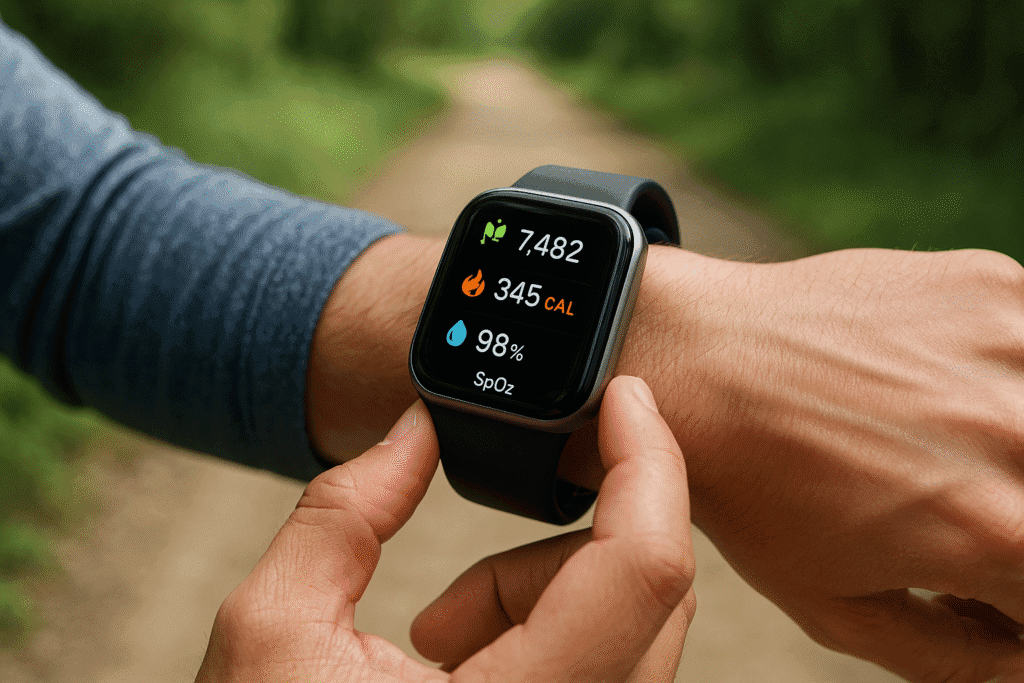
5. Blood Oxygen Saturation (SpO2)
What it does:
Measures the percentage of oxygen in your blood, using infrared sensors.
Why it matters:
Indicates respiratory health and overall wellness.
Can detect issues like sleep apnea or hypoxemia.
Essential for athletes, people at high altitudes, or those with lung/heart conditions.
Example:
Your smartwatch warns you of a drop in SpO2 during sleep, encouraging you to check for possible breathing issues.
6. ECG and Heart Rhythm
What it does:
Records an electrocardiogram (ECG or EKG) to monitor for irregular heart rhythms such as atrial fibrillation (AFib).
Why it matters:
Early detection of serious heart conditions.
Data can be shared directly with your doctor.
Example:
Apple Watch users can take an ECG anytime and get immediate results, helping catch heart problems early.
7. Respiration Rate
What it does:
Tracks the number of breaths you take per minute.
Why it matters:
Sudden changes may signal illness or stress.
Useful for tracking progress in breathing exercises or meditation.
8. Body Temperature
What it does:
Some advanced smartwatches monitor body temperature trends, not just absolute values.
Why it matters:
Early warning sign of fever or illness.
Helpful for women tracking menstrual cycles.
9. Menstrual Health Tracking
What it does:
Lets users log menstrual cycles, symptoms, and receive predictions for future cycles.
Why it matters:
Aids in fertility planning or understanding hormonal health.
Many watches now offer reminders for period and ovulation windows.
10. Fall Detection & Emergency Alerts
What it does:
Detects sudden impacts or hard falls and can automatically alert emergency contacts or 911.
Why it matters:
Essential for seniors or anyone with a risk of falls.
Provides peace of mind for family and caregivers.
Specialized Features by Brand
Apple Watch
ECG, irregular heart rhythm notifications
Blood oxygen sensor
High/low heart rate alerts
Fall detection
Noise level monitoring
Cycle tracking for women
Samsung Galaxy Watch
Continuous heart rate, SpO2, and stress tracking
Body composition analysis (body fat, water, muscle)
Sleep coaching and snore detection
Blood pressure monitoring (in select regions)
Fitbit & Garmin
Advanced sleep analytics and readiness scores
Skin temperature variation
EDA sensor for stress (Fitbit Sense)
Pulse Ox (Garmin’s name for SpO2)
Smartwatch Apps for Android
Google Fit integrates with most Android smartwatches
Tracks activity, heart rate, and can sync with third-party health apps
Smart Watches for Seniors
Simplified interfaces, larger displays
Enhanced fall detection
Medication reminders
Emergency SOS buttons
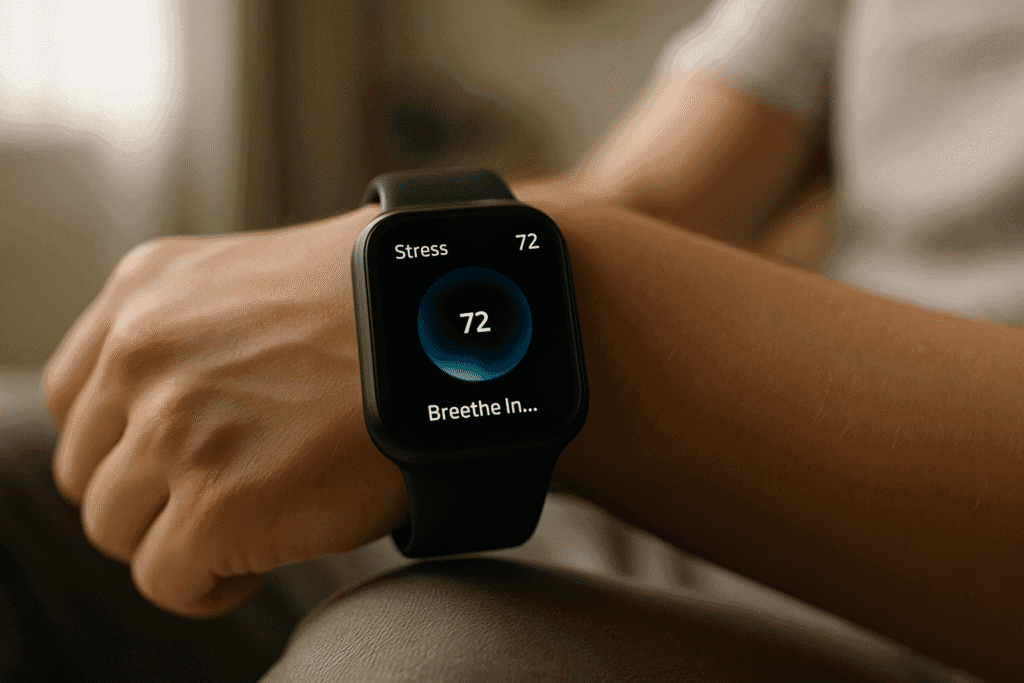
How Accurate Are Smartwatches for Health Monitoring?
Heart Rate: Generally accurate at rest and during moderate activity, but may be less reliable during intense movement.
Sleep: Good for general patterns, but not as precise as medical-grade equipment.
SpO2 and ECG: Good for trends and alerts, but always consult a doctor for diagnosis.
Best Practice: Use smartwatch health data for general awareness, not as a substitute for medical advice.
How Smartwatches Detect Health Issues
Many smartwatches use AI and pattern recognition to detect irregularities—such as unusual heart rate spikes, possible arrhythmias, low SpO2 during sleep, or even falls. Some models can alert you (and emergency contacts) if something’s wrong. Early warnings have helped users discover previously undetected heart conditions, sleep apnea, and other health issues.
Best Smartwatches for Health Monitoring (2025)
Apple Watch Series 9: Best for iPhone users and health features.
Samsung Galaxy Watch 6: Top Android option, with comprehensive tracking.
Fitbit Sense 2: Best for holistic health insights and stress monitoring.
Garmin Venu 3: For athletes and fitness-focused users.
WellBe Medical Alert Watch: Best for seniors and emergency response.
Tip: Choose the watch that fits your health priorities, comfort, and budget.
Why Smartwatch Health Data Matters: Real-Life Examples
Early AFib Detection: Multiple users have credited smartwatches with warning them about irregular heart rhythms, prompting lifesaving medical visits.
Better Sleep: Data-driven feedback helps users change routines for deeper, more restful sleep.
Fitness Motivation: Step goals and friendly reminders keep users moving—even on lazy days.
Managing Chronic Conditions: People with diabetes, heart issues, or respiratory problems use smartwatches to track and share data with their healthcare teams.
Maximizing Your Smartwatch: Tips and Best Practices
Wear it consistently: For more accurate trends, wear your watch day and night.
Sync with health apps: Connect to Apple Health, Samsung Health, or Google Fit for comprehensive data.
Set realistic goals: Use the data to set and gradually increase your daily movement or sleep targets.
Check accuracy: Update firmware and clean the sensors regularly.
Consult a doctor: If you get alerts about abnormal data, talk to a healthcare professional.
Frequently Asked Questions
What health data does a smartwatch have?
Most track heart rate, steps, sleep, activity, calories burned, SpO2, and stress. Many now offer ECG, fall detection, and menstrual tracking.
Can smartwatches detect health issues?
They can alert you to irregular heart rhythms, high/low heart rates, abnormal SpO2, falls, and trends that warrant medical review.
What vitals do smartwatches measure?
Heart rate, SpO2, respiration rate, temperature trends, and sometimes blood pressure (check your model).
How accurate are smartwatches for health monitoring?
They’re good for trends and general awareness, but should not replace medical equipment for diagnosis.
Final Thoughts: Take Charge of Your Well-Being
Your smartwatch is your health coach, sleep consultant, fitness tracker, and safety net—all on your wrist. By unlocking the full range of health metrics it can track, you’re taking an active step toward better living. Use the insights to set goals, create healthier habits, and spot warning signs early. Remember, the real power lies not just in tracking the numbers, but in what you do with the information.
Are you using your smartwatch to its full potential?
If you found this guide helpful, share it with friends, family, or anyone ready to take control of their health.
Stay informed. Stay healthy. And let your smartwatch keep you on track!

I am a USMC Veteran who worked with a Lot of computers and Technology while I was in. I became hooked and learned a lot in my 20 years.
At my store, I am passionate about bringing you the latest tech products that enhance your everyday life. Our mission is to provide quality, innovation, and value, making sure you find the perfect gadgets to fit your needs. Thanks for Your Support.. Larry Mac


